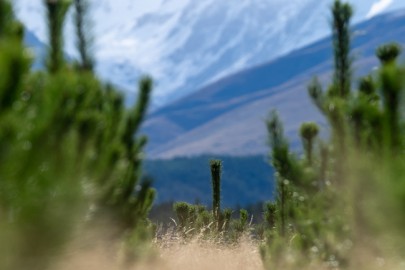
Wilding pines in the Mackenzie District
Planted in the right place, conifer trees can provide timber, store carbon, decrease erosion, filter soil nutrients, improve water quality, and provide shelter for stock. However, spreading on their own, they are a major threat to our ecosystems, land and farms – killing native plants and evicting animals – and are estimated to cost our economy $1.4 billion over the next 20 years.
Despite control efforts, wilding invasion continues to spread over an estimated 90,000 more hectares a year. If left untreated, wilding conifers will cover almost a quarter of New Zealand in two decades.
Stopping this spread is a major problem, but researchers say it is possible through intervention across all stages of invasion. In 2016 the National Wilding Conifer Control Programme was established to ensure a collaborative, coordinated and effective approach to national wilding management in New Zealand with the goal of preventing any further spread and efficiently containing or eradicating established areas of wilding conifers by 2030.
Manaaki Whenua works collaboratively on this national issue with MPI, Scion, DOC, and universities and leads the ‘Winning Against Wildings’ programme, which involves integrated research focusing on tools for wilding conifer management and ecosystem restoration.
Over the last year our researchers have been working in problematic areas in the Mackenzie Basin and Hanmer Springs, with a focus on measuring the ecological and environmental impacts of major wilding conifer species, better linking research and management on control methods, and integrating what we know about invasions and management through modelling.
They are also working to develop stage-specific tools to maximise the efficiency of detection and management, prevent further invasion, and ultimately protect and restore ecosystems. This information is then used to forecast when and where interventions can achieve desirable long-term outcomes while minimising both costs and negative impacts.
The overall aim of the ‘Winning against wildings’ programme is to integrate work across all stages of the invasion process to make management most effective, and to prevent future problems of wilding invasions.
This research is funded by MBIE, with support from MPI, DOC, the Wilding Conifer Management Group, and the Forest Owners’ Association.






